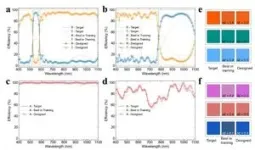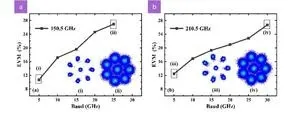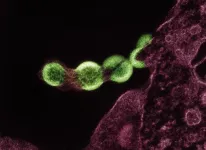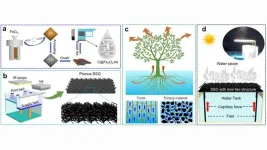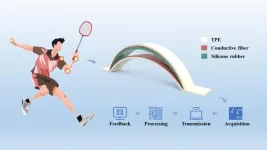A new publication from Opto-Electronic Advances; DOI 10.29026/oea.2024.240062, discusses OptoGPT, a new inverse design algorithm.
Optical multilayer thin film structure is one of the most important photonic structures widely used in many applications, including color filters, absorbers, optical cavities or resonators, photovoltaic and radiative cooling, special mirrors for extreme UV lithography and for space telescopes. Designing these structures requires much training and expertise as identifying the best combination of materials and the thickness at each layer is not an easy task: considering the large number of material choices, the possible searching space for designing such a multilayer structure can be extremely large. Different researchers may care about different types of optical responses, such as reflection, transmission, polarization, angled spectrum, etc. Therefore a general method that can inverse design structures to produce these different responses is highly desirable and can benefit all researchers in the field. How to achieve such a goal, however, is still unknown.
The authors of this article introduce a new inverse design algorithm called OptoGPT, inspired from the popular and powerful GPT models in natural language processing, such as OpenAI’s ChatGPT and Google’s Bard. In these GPT models, given an input prompt such as questions or guidance, they can output desirable and meaningful sentences as answers. The proposed OptoGPT model works in a similar way. When given a specific type of optical responses that a user desires, the model can output a designed multilayer structure directly.
To make OptoGPT work, the researchers first introduce the idea of structure tokenization to convert the material and thickness information at each layer into a single token. Then, they use the structure serialization to convert a multilayer thin film structure to a sequence of tokens as an input to the GPT model. In this way, their OptoGPT model can effectively design for both materials and thickness information. On the other hand, to make their model suited for different types of optical responses, they propose to design for both transmission and reflection spectrum and use multiple techniques to extend to diverse responses. Details can be found in Figure 1.
Using OptoGPT, the authors have successfully demonstrated a unified inverse design in different applications, including transmission filter, high reflection filter, perfect absorber, arbitrary absorber, reflective/transmissive structural color, to name a few. During design process, the OptoGPT model can automatically determine the best material as well as its thickness at each layer. In addition, each design process is extremely fast, and can be done within 0.1 second. Examples can be found in Figure 2.
In addition, the authors further propose the idea of “probability resampling” to design structure that can satisfy arbitrary constraints during fabrication or other practical requirements. By using finetuning and “mixed sampling”, their model can work for different incident angles and different polarizations, as well as simultaneous design that can satisfy multiple angles and polarization requirements. In this way, ultimately the team build a model that can unify the multilayer design for different materials and thickness, and for different types of optical responses, including transmission, reflection, absorber, structural color, angles, and polarization states, which significantly simplify the inverse design process, making them easily accessible to researchers and engineers.
Keywords: multilayer thin film structure / inverse design / foundation models / deep learning / structural color
# # # # # #
Professor Guo Group’s research is highly interdisciplinary, covering topics such as polymer-based photonic devices and sensor applications, flexible transparent conductors, structural colors and metasurfaces, photovoltaics OLEDs and photodetectors, nanomanufacturing technologies, and recent interest in machine-learning based optical inverse design. His group has published 285+ scientific papers, and they were contributed by students from Electrical Engineering and Optics, Macromolecular Science & Engineering, Applied Physics, Physics, and Mechanical Engineering. Several technologies developed by the lab have found industrial applications, including two tech startups to commercialize flexible transparent conductor and structural color technologies.
# # # # # #
Opto-Electronic Advances (OEA) is a rapidly growing high-impact, open access, peer reviewed monthly SCI journal with an impact factor of 15.3 (Journal Citation Reports for IF2023). OEA has been indexed in SCI, EI, DOAJ, Scopus, CA and ICI databases, and expanded its Editorial Board to 31 members from 17 countries with an average h-index of 62.
The journal is published by The Institute of Optics and Electronics, Chinese Academy of Sciences, aiming at providing a platform for researchers, academicians, professionals, practitioners, and students to impart and share knowledge in the form of high quality empirical and theoretical research papers covering the topics of optics, photonics and optoelectronics.
# # # # # #
More information: http://www.oejournal.org/oea
Editorial Board: http://www.oejournal.org/oea/editorialboard/list
All issues available in the online archive (http://www.oejournal.org/oea/archive).
Submissions to OEA may be made using ScholarOne (https://mc03.manuscriptcentral.com/oea).
ISSN: 2096-4579
CN: 51-1781/TN
Contact Us: oea@ioe.ac.cn
Twitter: @OptoElectronAdv (https://twitter.com/OptoElectronAdv?lang=en)
WeChat: OE_Journal
# # # # # #
Ma TG, Wang HZ, Guo LJ. OptoGPT: A foundation model for inverse design in optical multilayer thin film structures. Opto-Electron Adv 7, 240062 (2024). doi: 10.29026/oea.2024.240062
END

